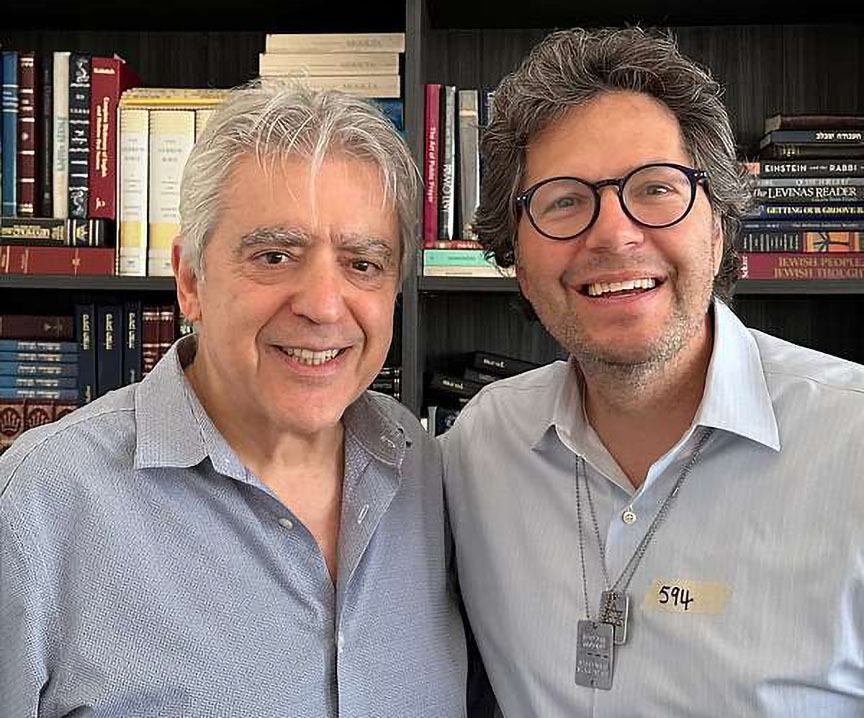It all began with an idea for a building. Aron Hirt-Manheimer was a UCLA senior-year psychology major in 1969 when The Jewish Federation of Greater Los Angeles proposed to buy a building for student activities. In light of a strong Hillel and Chabad presence on campus, “we felt that we didn’t need another building,” he recalled. “What we wanted was creative Jewish programming. They said, ‘Why don’t you propose something? And UCLA Hillel, under director [Rabbi] Richard Levy, will administer it.'”
The students came up with 10 projects, one of which was Hirt-Manheimer’s idea for Davka, a literary magazine that would serve as a forum of expression for the Jewish student body. Begun as a glorified pamphlet in 1970, it quickly evolved into a full-color magazine and is now a nationally distributed quarterly. (The magazine bears no relation to the 1990s Northern California magazine of the same name.)
“It was born in protest and grew out of a community,” Hirt-Manheimer said. “I felt that the establishment press wasn’t presenting a lot of the new ideas. I wanted something more visionary.”
Levy recalled, “Our feeling was that we were creating a forum for what was beginning to be a Jewish renaissance, before the term got national usage.”
Hirt-Manheimer served as editor or co-editor for six of the magazine’s seven years, and he credited frequent contributor Levy, now head of the School of Rabbinic Studies at Hebrew Union College-Jewish Institute of Religion (HUC-JIR), as key to making Davka happen.
In the first issue, a critique of the Jewish establishment headlined “The Ills of American Jewry” was not well-received by some Federation officials.
“They thought they had created a monster,” Hirt-Manheimer said. Nevertheless, Federation subsidized the student effort for most of its run and exercised no editorial control.
Looking through old issues now, it is apparent that this was very much a magazine of its day — preoccupied with social activism and regionally influenced schools of thought wrapped in Jewish pride and culture. With a press run of 3,000, it was a West Coast counterpart of Response, a cutting-edge Jewish publication in New York.
Typical headlines in Davka included “Jewish Education Via Transcendental Meditation” and “Israeli Education System Unfair to Oriental Jews.” The magazine boldly ventured into heady, sometimes controversial, territory that other Jewish periodicals refused to confront. It addressed women’s concerns, such as an expansion of female roles in Jewish ritual, and it took a hard stance on Vietnam (the first issue’s back cover screamed “End the War!”). Also noteworthy was the abundance of often socially &’9;conscious student poetry and art. A Hollywood edition featured a Richard Dreyfuss interview and an homage to the late Edward G. Robinson.
But by 1977, Davka could no longer maintain its $30,000 annual budget.
“Davka is dead,” Neil Reisner wrote in his final editorial. “It is a small loss, perhaps,” he commented, noting its circulation of 3,000. “One can only pray that something else will arise to fill the void.”
Despite its short run, the talent within its pages was impressive — Rachel Adler, now an HUC-JIR professor, who published her first piece in Davka; Mark Hurvitz, now a San Diego-based rabbi; Stephen Sass, now president of Jewish Historical Society of Southern California; and best-selling mystery author Jonathan Kellerman, who not only wrote articles but illustrated Davka’s first cover.
Levy saw Davka as part of a larger movement of Jewish rediscovery among American Jews, at a time when ethnic pride in general began to gain currency.
Hirt-Manheimer felt that Davka’s influence was on a national, not local, scale. He noted that the founding editors of Moment magazine used Davka as a model in creating their own successful publication.
Hirt-Manheimer went on to helm the Reform educational quarterly Keeping Posted for 12 years, then moving to Reform Judaism magazine, which he still oversees. On May 14, he will receive an honorary doctorate in Jewish education from HUC. But, he added, “It was on the strength of Davka that I was hired to edit these publications.”























 More news and opinions than at a Shabbat dinner, right in your inbox.
More news and opinions than at a Shabbat dinner, right in your inbox.